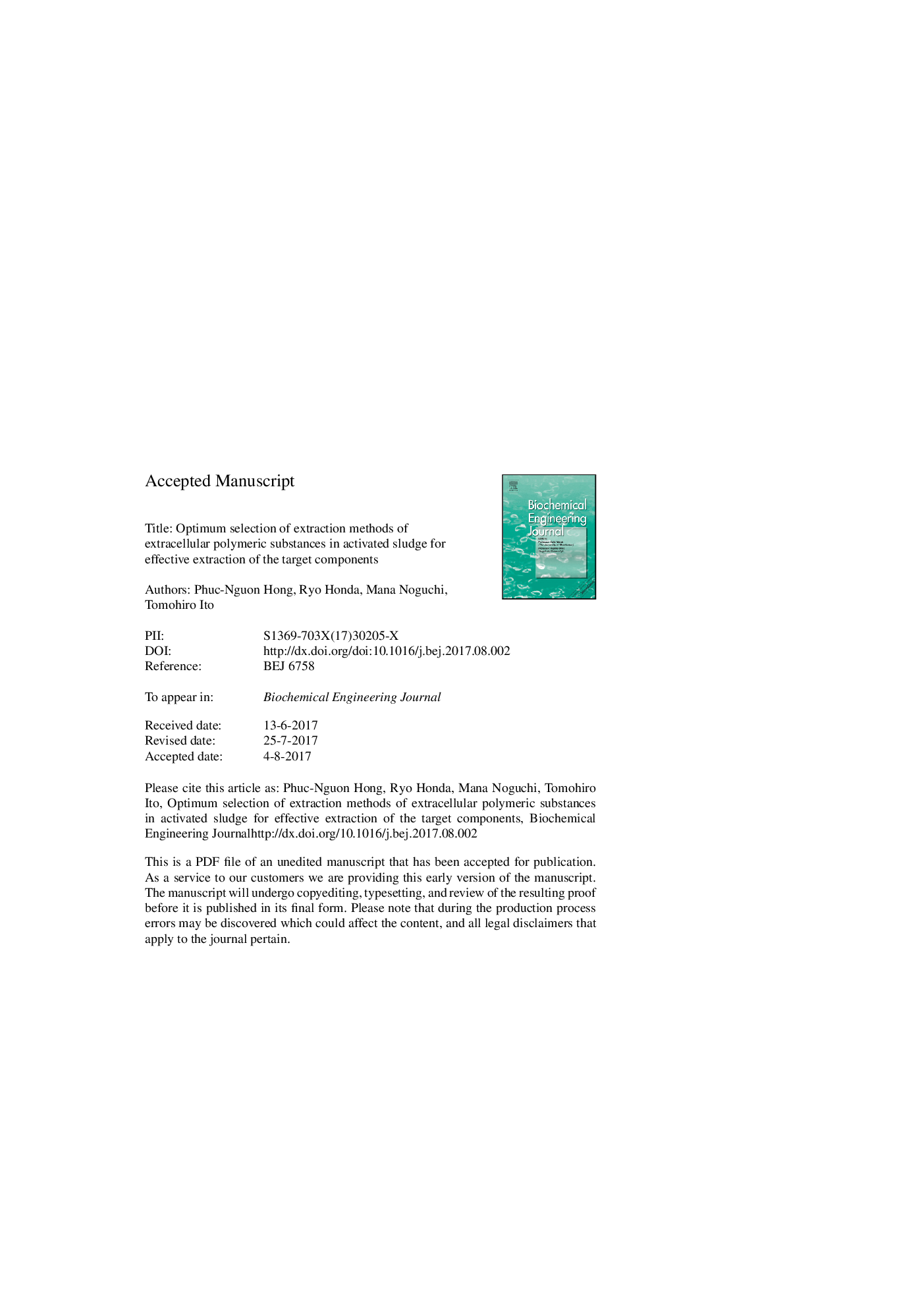| Article ID | Journal | Published Year | Pages | File Type |
|---|---|---|---|---|
| 4752049 | Biochemical Engineering Journal | 2017 | 31 Pages |
Abstract
Effects of extraction methods of extracellular polymeric substances (EPS) from activated sludge on extraction efficiency and extract composition were investigated. EPS extract was characterized based on protein and polysaccharide composition, excitation-emission matrix (EEM) and molecular weight (MW) profile. Four methods were applied to extract EPS from activated sludge: combination of formaldehyde and sodium hydroxide, combination of sodium hydroxide and heating, cation exchange resin (CER) for tightly-bound EPS, and sonication for loosely-bound EPS. Extraction methods affected not only extraction efficiency but also composition of proteins and polysaccharides, EEM spectra and MW profile of extracted EPS. Combination of formaldehyde and alkaline is preferable to acquire high extraction efficiency with less cell lysis. Upon EEM analysis, the CER method was appropriate to detect a wide range of fluorescent organic substances, while alkaline extraction was less efficient for detection of humic acid-like substances. Alkaline extraction is more appropriate for extraction of large EPS molecules with a variety of MWs. However, it should be noted that changes in MW distribution may occur during alkaline extraction. Consequently, selection of extraction methods is crucial to achieving effective extraction of the target components of EPS.
Keywords
Related Topics
Physical Sciences and Engineering
Chemical Engineering
Bioengineering
Authors
Phuc-Nguon Hong, Ryo Honda, Mana Noguchi, Tomohiro Ito,
